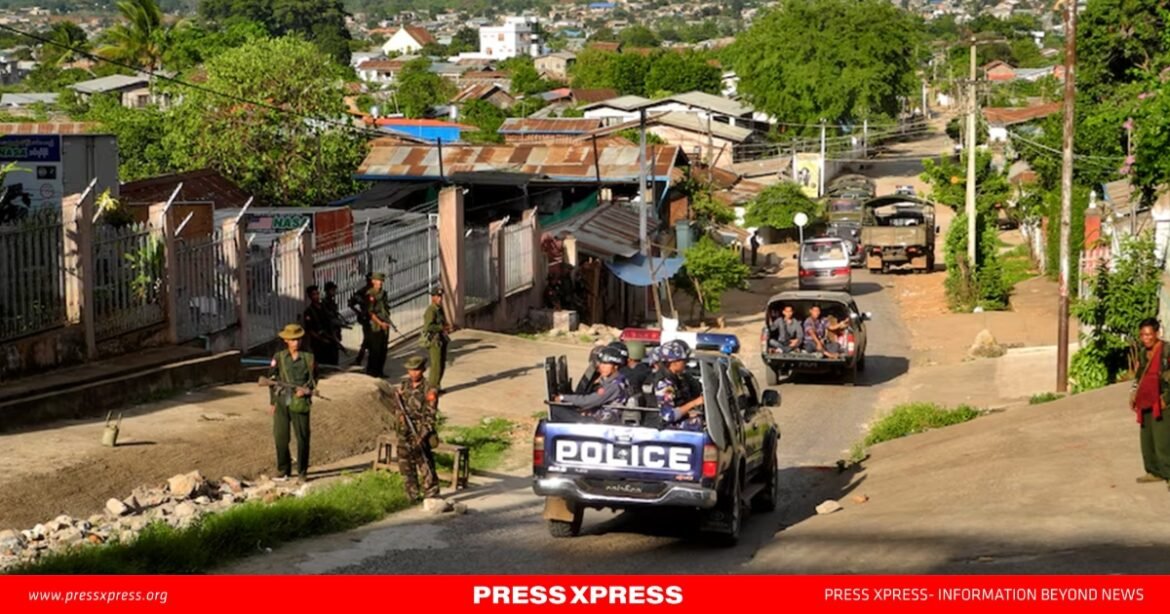China has announced the successful brokering of a ceasefire agreement between Myanmar’s military government and the Myanmar National Democratic Alliance Army (MNDAA), an ethnic rebel group controlling territory along the Sino-Myanmar border. The agreement, formalized over the weekend, marks the second attempt at such a pact in just over a year.
A Fragile Truce
The ceasefire, effective since Saturday, follows a prior agreement in January 2024 that both sides failed to honor. Chinese Foreign Ministry spokesperson Mao Ning revealed during a press briefing that the deal was mediated in mid-January. However, details about the agreement remain sparse, and Myanmar’s military authorities have yet to comment.
China, a crucial ally of Myanmar’s military junta since its 2021 coup, has significant stakes in ensuring stability along its border. The military’s ousting of Aung San Suu Kyi’s government triggered nationwide protests and a descent into civil war, with various ethnic armed groups joining pro-democracy forces against the junta.
“We hope all parties will maintain the momentum of ceasefire and peace talks, earnestly implement their agreements, de-escalate ground tensions, and resolve issues through dialogue,” Mao Ning stated, emphasizing China’s commitment to supporting peace in the region.
Strategic Interests
The MNDAA, comprising the ethnic Chinese Kokang minority, declared a unilateral ceasefire last year under Chinese auspices. It is part of the Three Brotherhood Alliance, a coalition that launched a significant offensive in October 2023 along the border with China. While Beijing initially appeared to tolerate the offensive—believed to target illegal gambling and internet scams run by ethnic Chinese gangs—the conflict ultimately threatened the Myanmar military’s control over key territories.
China’s reaction to renewed fighting was swift. Border crossings were shut, electricity supplies to Myanmar towns were cut, and other measures were taken to pressure the rebel groups. Local reports suggest Beijing has detained MNDAA leader Peng Daxun, though his current whereabouts remain unknown.
Broader Implications
Bill Hayton, a Myanmar expert at the UK-based think tank Chatham House, views China’s involvement as reflective of its strategic priorities. “China’s biggest fear in Myanmar is state fragmentation,” Hayton explained. “Beijing wants stability but is cautious about committing resources to enforce a nationwide ceasefire.”
While the MNDAA and other ethnic armed groups push for greater autonomy, Myanmar’s junta retains recognition as the country’s sovereign power by neighboring states, despite facing setbacks in some regions. Kim Jolliffe, a researcher specializing in Myanmar, noted that while resistance movements have gained traction, the military retains a nationwide presence unmatched by any other actor.
A Long Road to Peace
The ceasefire offers a tentative step toward de-escalation, but Myanmar’s broader conflict continues to rage. Ethnic groups like the Arakan Army dominate areas such as Rakhine State in the west, with China’s mediation largely confined to its border zones.
The civil war, marked by widespread destruction and displacement, has drawn limited intervention from international stakeholders. The Association of Southeast Asian Nations (ASEAN) has been criticized for its inaction, even as the instability fuels cross-border challenges, including migration and criminal activities.
China has recently reopened border gates connecting territories controlled by the MNDAA and the United Wa State Army, another influential rebel group. Observers will closely monitor how ethnic armed groups leverage their positions to renegotiate trade agreements with Beijing and whether this ceasefire can pave the way for broader peace efforts.
For now, the ceasefire remains a fragile beacon of hope in a conflict that has devastated Myanmar and strained regional stability.


